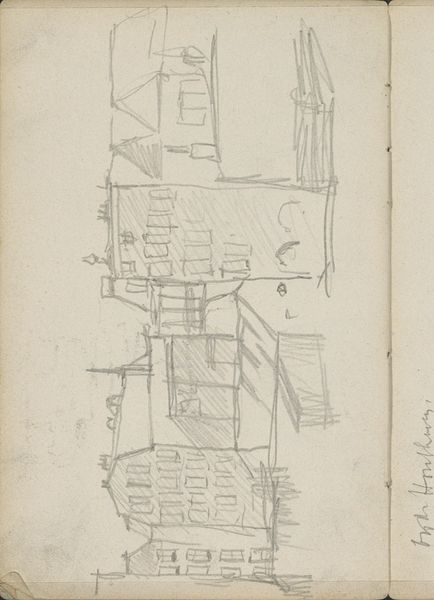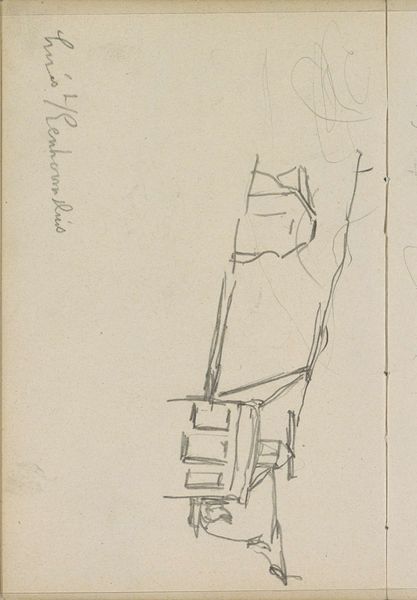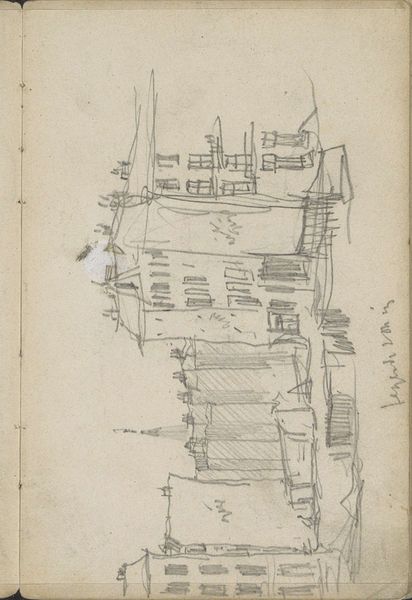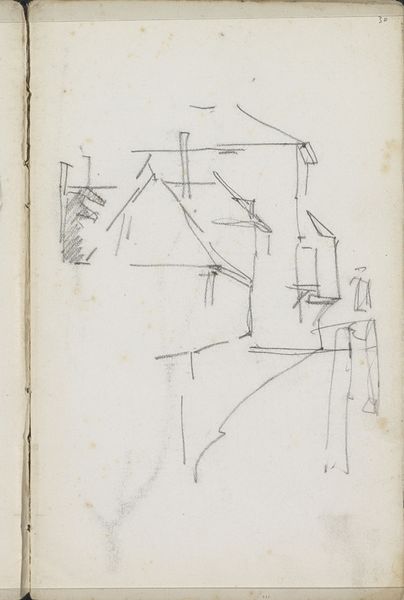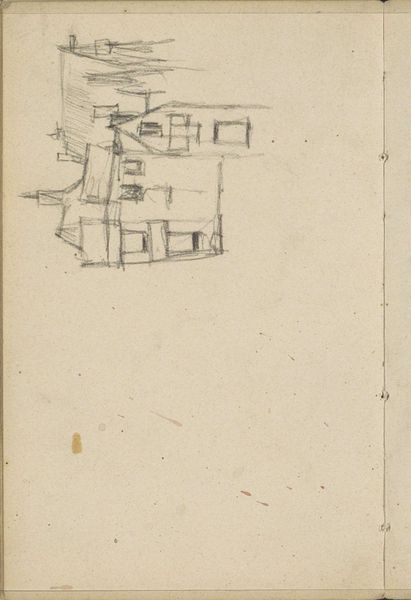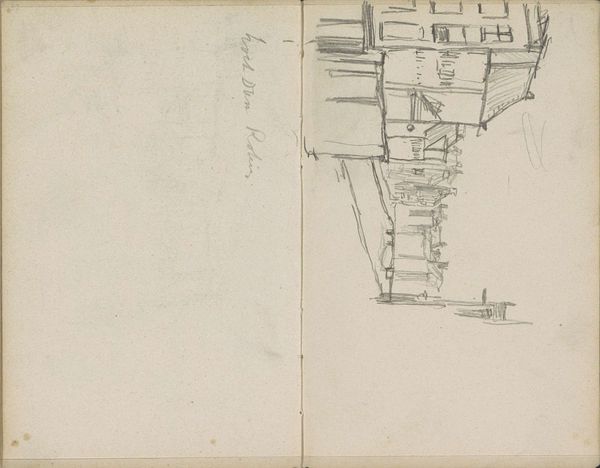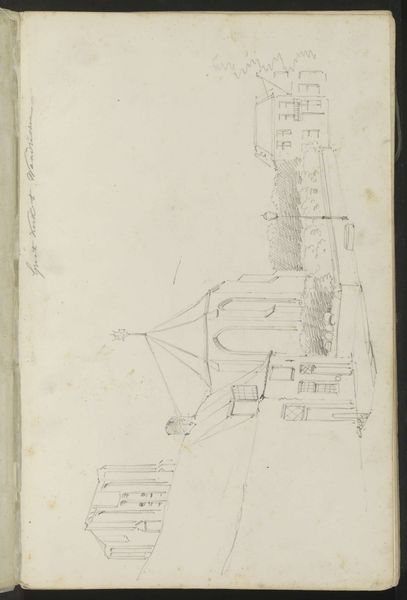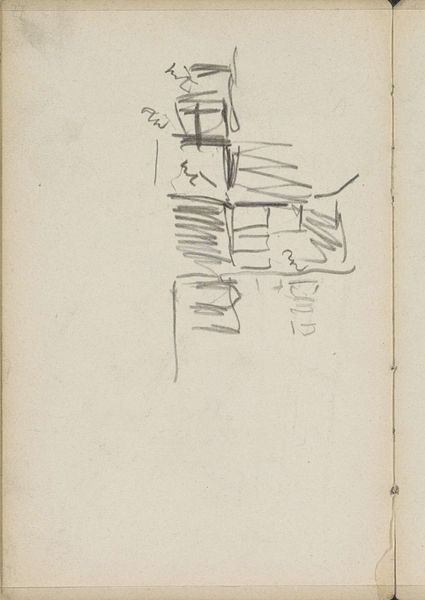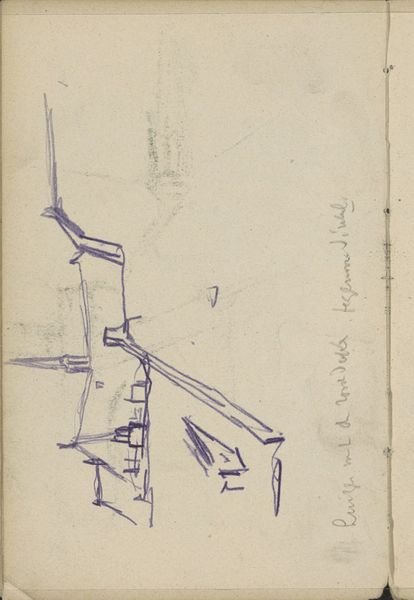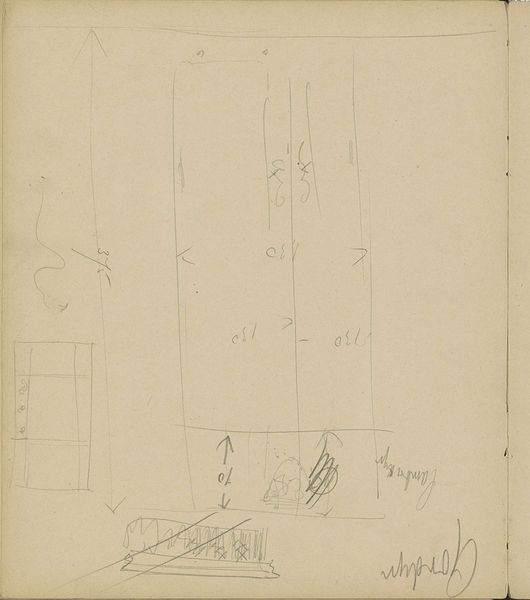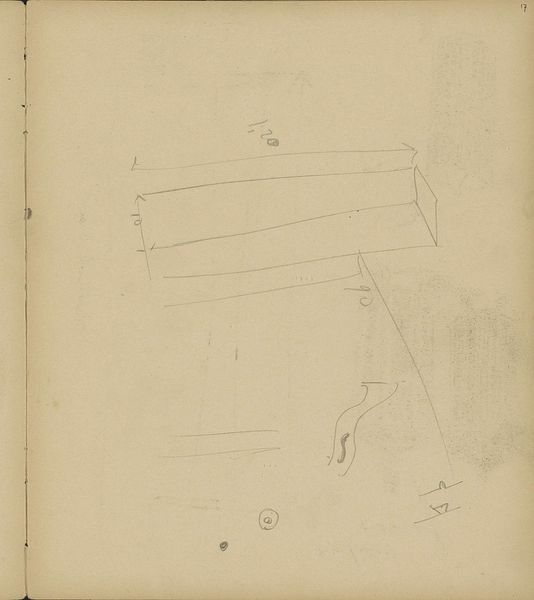
Gezicht op gebouwen aan het Damrak te Amsterdam ter hoogte van de Oudebrugsteeg c. 1900 - 1901
0:00
0:00
georgehendrikbreitner
Rijksmuseum
Copyright: Rijks Museum: Open Domain
Editor: Here we have "Gezicht op gebouwen aan het Damrak te Amsterdam ter hoogte van de Oudebrugsteeg," a pencil drawing from around 1900-1901 by George Hendrik Breitner, currently held in the Rijksmuseum. The muted tones give the buildings a sort of ethereal, fleeting presence, almost like a memory fading away. What do you make of it? Curator: The seemingly simple sketch reveals layers when considered as part of Breitner’s artistic approach. Note the rapid, almost shorthand notation. The strokes capture more than just architectural details. The visible page edges and faint handwritten notes suggest this was not intended as a finished piece but part of a sketchbook—a receptacle for urban life's transient moments. Doesn't this suggest something about the changing landscape of Amsterdam and how we choose to remember the recent past? Editor: I see what you mean. The visible edges really place the sketch in time, not just of the buildings but also as part of the artist's everyday experience. Curator: Exactly! The building itself isn't necessarily unique but by being observed, perceived and captured by the artist, these fleeting moments become a symbolic representation of a city transforming. Do you notice anything about the absence of human presence within the image? Editor: Now that you point it out, yes. There are no people depicted here at all. Just this imposing, almost lonely building. Does that silence amplify some greater commentary on the urbanization of Amsterdam at the turn of the century? Curator: It could certainly suggest the individual's diminishing presence amidst burgeoning city structures. Breitner here may be drawing on an unspoken anxiety, transforming this city into a memoryscape of isolation and possibly obsolescence. He immortalized a sense of detachment despite urban growth, didn’t he? Editor: I never thought of a simple sketch could hold such a layered emotional and cultural story. Curator: Art often functions as a conduit between eras, whispering secrets and shared histories that still resonate. Editor: I’ll definitely look at sketchbooks differently from now on.
Comments
No comments
Be the first to comment and join the conversation on the ultimate creative platform.
